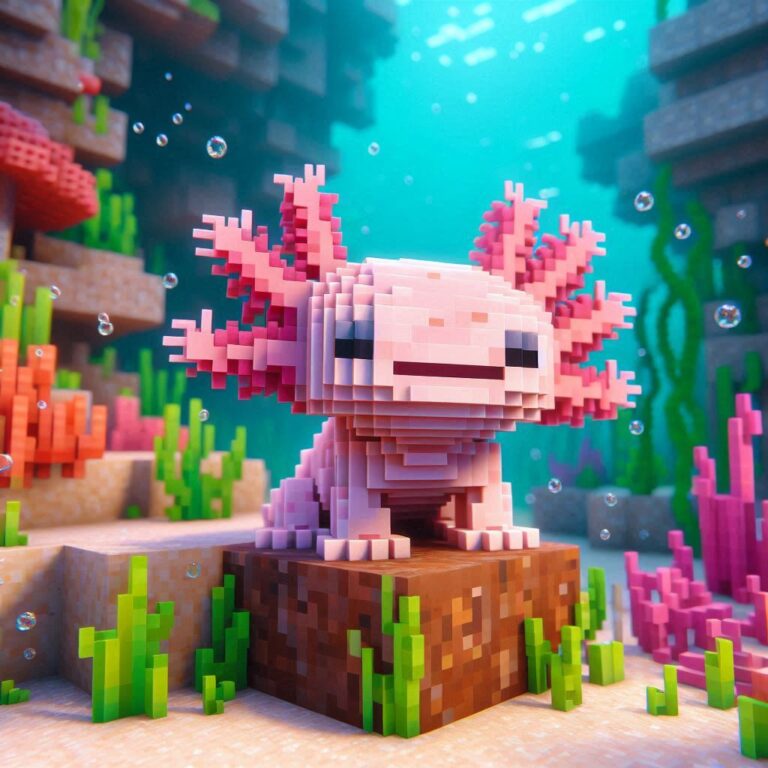
Axolotls are fascinating aquatic creatures that require specific care to thrive in captivity. One common question among axolotl owners is whether or not to add salt to their tank. In this article, we’ll explore the effects of salt on an axolotl tank, the step-by-step process of adding salt, precautions to take, and whether aquarium salt is suitable for axolotls.
What Does Salt Do to the Axolotl Tank?
Adding salt to an axolotl tank can have significant effects on the overall environment and the well-being of these captivating aquatic creatures. One primary impact lies in the realm of osmoregulation, a crucial physiological process for axolotls. Osmoregulation involves the regulation of water and salt concentrations within their bodies, ensuring a delicate balance for optimal health. Salt influences this balance by affecting the water’s osmotic pressure, allowing axolotls to maintain internal stability. However, it’s essential to strike the right balance, as excessive salt concentrations can lead to stress and adverse health effects.
Osmoregulation in Axolotls
Osmoregulation is a vital aspect of axolotl biology, and understanding how salt influences this process is crucial for responsible pet ownership. Axolotls naturally inhabit freshwater environments, making them sensitive to changes in salinity. When salt is added to their tank, it alters the osmotic pressure, prompting adjustments in the axolotls’ osmoregulatory mechanisms. These remarkable creatures actively regulate the movement of water and ions to prevent dehydration or excessive water absorption. Proper osmoregulation is essential for maintaining the integrity of their cells and bodily functions. As keepers, it’s our responsibility to provide an environment that supports their natural osmoregulatory processes and ensures their well-being.
Stress Reduction
While the idea of adding salt may initially seem counterintuitive to promoting a stress-free environment, it can indeed aid in stress reduction for axolotls. The controlled introduction of salt helps create a more stable and supportive aquatic habitat. Axolotls may encounter stress due to changes in water conditions, transport, or health issues. The addition of salt can act as a buffer, alleviating stress by promoting a consistent osmotic environment. It’s essential to monitor their behavior closely during this process, as individual responses may vary. By understanding the relationship between salt, osmoregulation, and stress reduction, axolotl enthusiasts can enhance the overall welfare of these unique aquatic companions.
Step-by-Step Process of Putting Salt into Axolotl’s Tank
Introducing salt to an axolotl tank is a thoughtful process that requires precision and care. The step-by-step approach ensures that the delicate balance of the aquatic environment is maintained, promoting the health and well-being of these fascinating creatures. Firstly, determining the right type of salt is crucial; aquarium salt, specifically designed for aquatic use, is preferable. Once the appropriate salt is selected, the process begins with calculating the right amount based on the size of the tank and the specific needs of the axolotls.
Determining the Right Amount
The key to a successful salt introduction lies in determining the right amount for your axolotl tank. This involves considering factors such as the tank size, the number of axolotls, and the reason for adding salt. Typically, a general guideline is to add one teaspoon of aquarium salt per gallon of water, but individual requirements may vary. Consulting with a vet or experienced axolotl keeper can provide tailored advice based on the unique characteristics of your tank and axolotls. Precise measurements ensure that the salt concentration is therapeutic rather than detrimental, supporting the osmoregulatory balance crucial for their health.
Gradual Introduction
Adding salt to the axolotl tank is not a one-time event but rather a gradual process that requires patience. Abrupt changes in salinity can stress axolotls, so the introduction should be spread over several days. Begin with a small amount, typically one-fourth of the calculated dose, and observe how the axolotls respond. If they show no signs of distress, gradually increase the amount every 24 hours until reaching the recommended concentration. Monitoring their behavior during this period is essential, ensuring that the adjustment is well-tolerated and supporting a smooth transition to the modified environment. The gradual introduction of salt safeguards the health and comfort of your axolotls, allowing them to acclimate without unnecessary stress.
What Are Things Not to Do When Putting Salt into Axolotl Tank?
While adding salt to an axolotl tank can have beneficial effects, it’s crucial to be aware of potential pitfalls to ensure the well-being of these unique aquatic creatures. There are certain practices that should be avoided during the process to prevent harm and stress to axolotls. By understanding what not to do, axolotl keepers can maintain a safe and supportive environment for their pets.
Avoiding Overdosing
One of the most common mistakes when adding salt to an axolotl tank is overdosing. Axolotls are highly sensitive to changes in water conditions, and an excess of salt can lead to serious health issues. It’s essential to carefully measure and calculate the appropriate amount of salt based on the tank size and the specific needs of the axolotls. Overdosing can result in increased salinity, disrupting the delicate osmoregulatory balance crucial for their survival. Regular monitoring and adherence to recommended guidelines help prevent the potential harm associated with overdosing, ensuring a healthy and thriving axolotl habitat.
Monitoring Axolotl Behavior
The introduction of salt to an axolotl tank should be a gradual process accompanied by vigilant monitoring of axolotl behavior. Sudden changes in the environment can cause stress, and axolotls may exhibit signs of distress through altered swimming patterns, reduced appetite, or abnormal behaviors. It’s crucial to observe their response to the salt introduction, ensuring that they adapt well to the modified conditions. If any signs of stress or discomfort are detected, adjustments should be made promptly. Regular and attentive monitoring allows axolotl keepers to intervene if necessary, providing a proactive approach to their well-being and fostering a harmonious environment in the tank.
Can You Use Aquarium Salt with Axolotls?

Using aquarium salt with axolotls is a common practice, but it requires careful consideration to ensure the well-being of these aquatic creatures. Aquarium salt is a specialized salt designed for use in freshwater aquariums, making it a suitable option for axolotl tanks. However, it’s crucial to understand the specific needs and sensitivities of axolotls to make an informed decision about the type of salt to introduce to their environment.
Aquarium Salt vs. Other Types
When contemplating the use of salt in an axolotl tank, the choice between aquarium salt and other types of salt is a critical decision. Aquarium salt is preferred for its purity and lack of additives that could be harmful to axolotls. Unlike table salt or other salts with additional chemicals, aquarium salt provides the necessary sodium chloride without introducing potentially harmful substances. The composition of aquarium salt aligns more closely with the natural conditions axolotls thrive in, making it a safer and more suitable choice for use in their tanks.
Potential Risks
While aquarium salt is generally considered safe for axolotls when used in moderation, there are potential risks associated with its misuse. Overdosing can lead to increased salinity in the water, disrupting the osmoregulatory balance crucial for axolotls’ well-being. It’s essential to follow recommended guidelines for salt concentration and introduce it gradually to prevent stress or harm to the axolotls. Additionally, regular monitoring of water parameters and the axolotls’ behavior is crucial to identify and address any potential issues promptly. By understanding the potential risks and exercising caution, axolotl keepers can harness the benefits of aquarium salt while ensuring a safe and comfortable environment for their aquatic companions.
FAQs
Q1: Can I use table salt instead of aquarium salt for my axolotls?
A. No, table salt often contains additives that can be harmful to axolotls. It is recommended to use aquarium salt specifically designed for aquatic environments.
Q2: How often should I add salt to the axolotl tank?
A. The frequency of adding salt depends on the specific needs of your axolotls and the reason for adding salt. Consult with a vet for personalized advice.
Q3: Will adding salt affect the pH level of the axolotl tank?
A. Yes, adding salt can influence the pH level. It’s crucial to monitor the pH and make adjustments as needed to maintain a suitable environment.
Q4: Can axolotls tolerate high salt concentrations?
A. Axolotls are sensitive to salt, and high concentrations can be harmful. It’s important to follow recommended guidelines to prevent any adverse effects.
Q5: Is it necessary to quarantine axolotls when adding salt?
A. Quarantining axolotls during the salt introduction process is not mandatory, but it can be a precautionary measure to monitor their response and prevent stress.
Q6: What signs indicate that axolotls are stressed due to salt?
A. Signs of stress may include changes in behavior, reduced appetite, and abnormal swimming patterns. If observed, consult with a vet for guidance.
Q7: Can I use Epsom salt in the axolotl tank?
A. Epsom salt is not recommended for axolotl tanks. Stick to aquarium salt designed for aquatic use to ensure the well-being of your axolotls.
Q8: Will salt help with axolotl injuries or wounds?
A. Salt may aid in preventing infections, but it’s crucial to consult with a vet for appropriate treatment and dosage to address injuries or wounds.
Q9: Can axolotls develop a tolerance to salt over time?
A. Axolotls do not develop a tolerance to salt, so it’s important to maintain proper concentrations and follow recommended guidelines consistently.
Q10: What should I do if I suspect salt overdose in my axolotl tank?
A. If you notice signs of salt overdose, immediately perform a partial water change to dilute the salt concentration. Consult with a vet for further guidance.
Conclusion
In conclusion, the decision to add salt to an axolotl tank is a nuanced one that demands a thoughtful and informed approach. Understanding the intricate relationship between salt, osmoregulation, and the well-being of axolotls is paramount for responsible pet ownership. The step-by-step process of introducing salt ensures that the delicate balance of the aquatic environment is maintained, promoting optimal health and minimizing potential risks.
While aquarium salt proves to be a suitable option for axolotls, it’s essential to steer clear of common pitfalls, such as overdosing, which can lead to adverse effects on these sensitive creatures. Monitoring axolotl behavior during the introduction of salt provides valuable insights, allowing keepers to make necessary adjustments and foster a stress-free habitat.

Hassan Shah carries over four years of hands-on expertise in caring for axolotls, guided by his cherished companion ‘Little Bruno,’ a thriving axolotl under his attentive care for three years.



